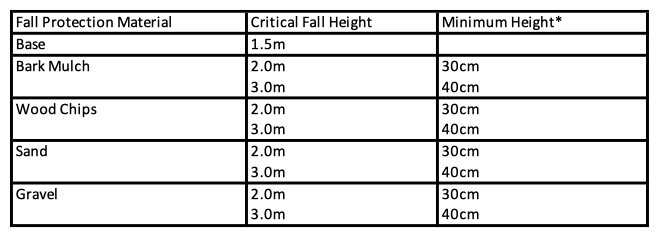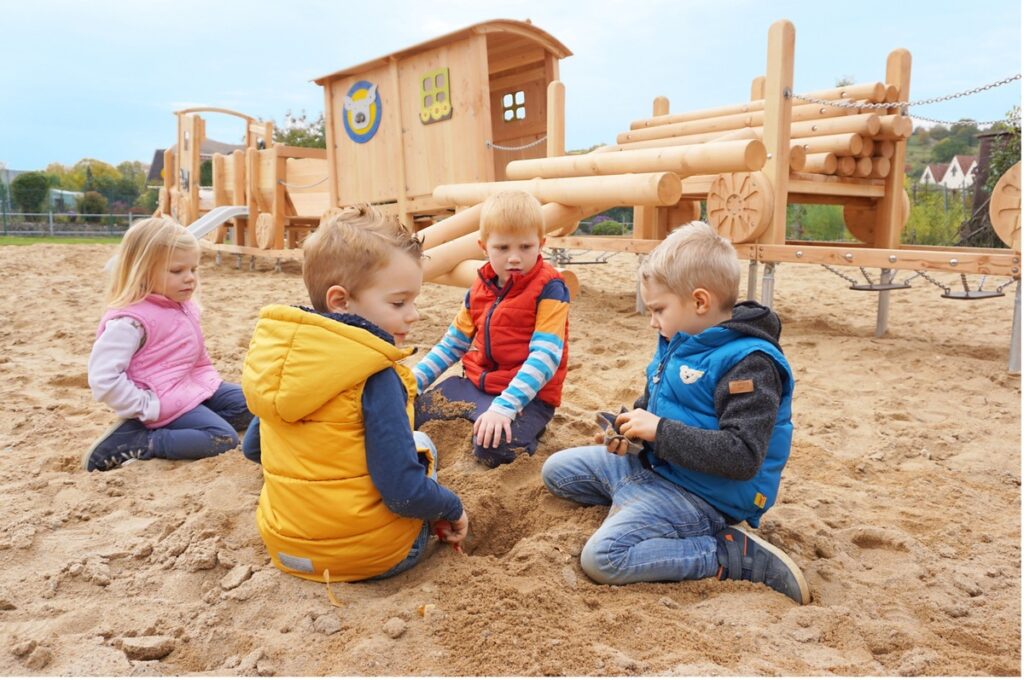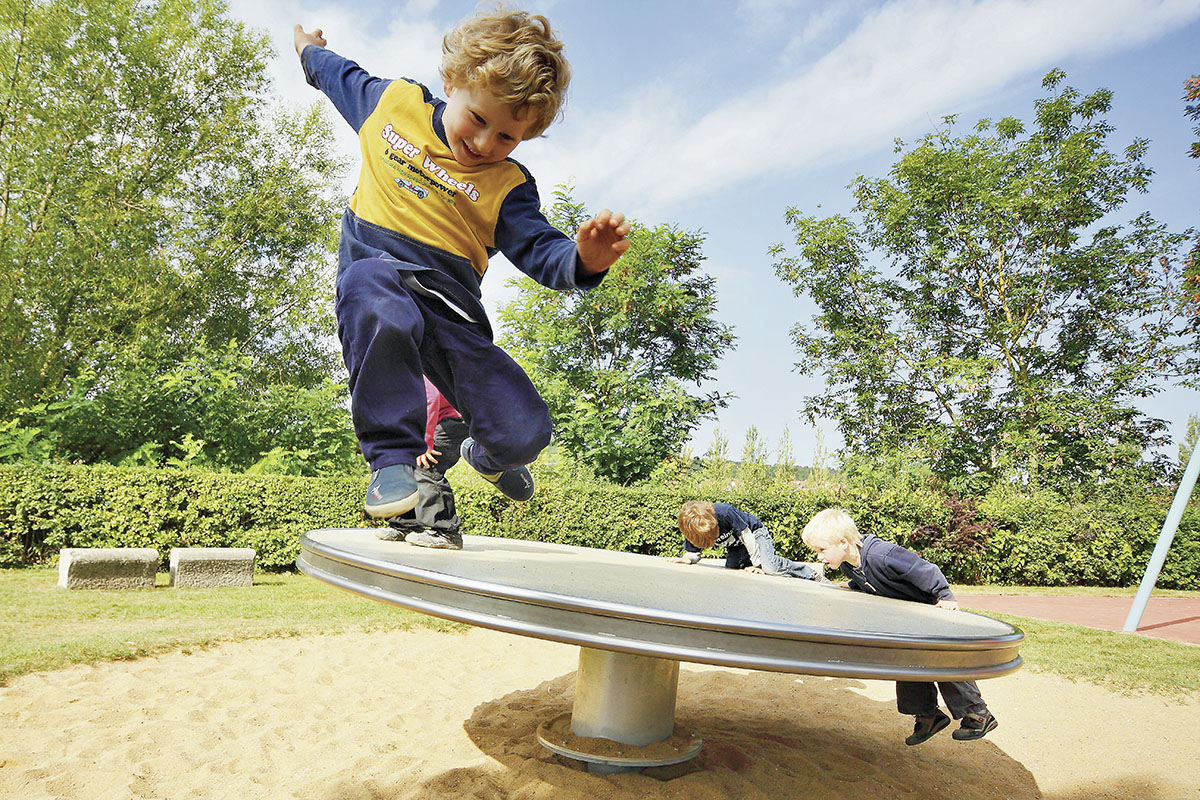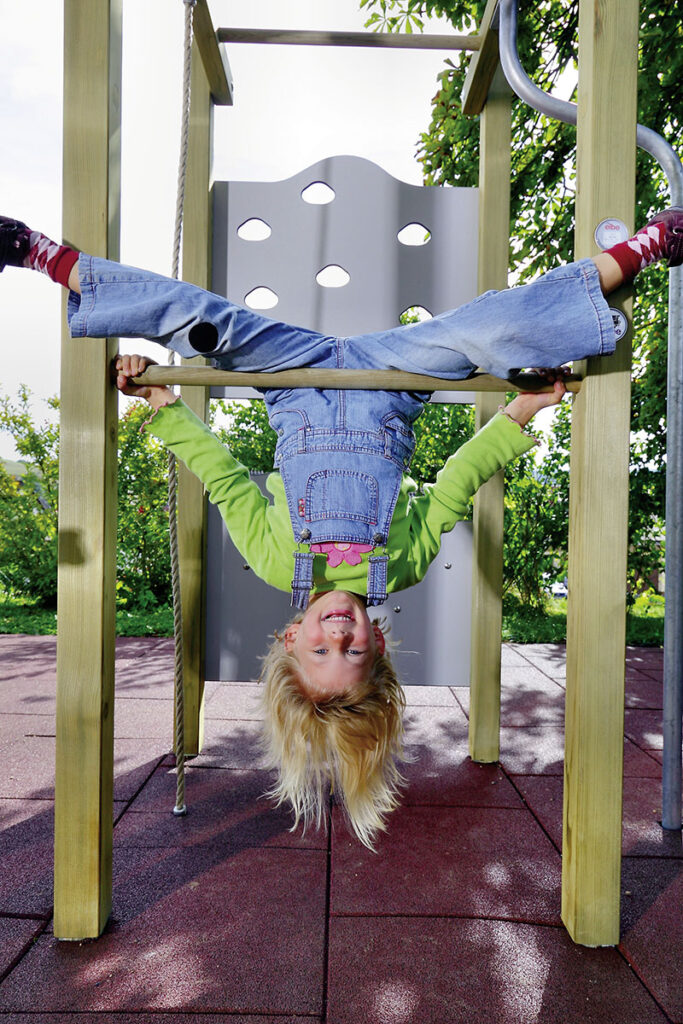Things can get a bit rough in the playground. Especially when several children are playing at the same time, one or two minor accidents are inevitable. The right fall protection on the playground ensures that falls do not lead to serious injuries. Read here about the different types of fall protection and their advantages and disadvantages.
Table of contents
- Fall protection according to regulations
- Which ground is suitable for which fall height?
- This is how the fall protection on the playground must be maintained
Fall protection according to regulations
Proper fall protection is important because, especially where children play, safety first. Basically, the Product Safety Act regulates the safety of all playground equipment. In addition, DIN EN 1176 defines the special safety requirements that are precisely tailored to equipment and also take into account its location. This also results in some important guidelines for the respective fall protection.
Which floor is suitable for which fall height?
The lower a child can theoretically fall, the better shock-absorbing the surface must be. For suitable fall protection on the playground, the minimum filling height must always be observed. It is also very important to remember that a certain amount of the protective layer will “play” away. So be sure to keep an eye on your surfacing and refill it if necessary.

Please note that DIN EN 1176 contains a special table I1. For Germany, this table replaces Table 4, which is valid for other countries. For Germany, it is therefore still sufficient to use sand or gravel of the above-mentioned grain size, whereas, in other countries, the D60/10 degree of unevenness must be proven for gravel and sand. In Germany, therefore, you do not have to carry out any further examination of the grain size as proof of suitability for sand or gravel. The sand or gravel supplier’s proof of e.g. a washed gravel with a grain size of 2-8mm is sufficient.

The use of natural fall protection material adds additional play value to the playground, e.g. for sand and role play. Loose fall protection such as sand and gravel is at the same time play material and promotes sensory haptic perception through its properties. Together with wooden play equipment, it turns the playground into a near-natural experience space.
In addition to the above-mentioned natural ground types, there are other options for safe fall protection on the playground.
- Rubber granulate fall protection slabs
- Different variants are available for different fall heights
- Also available in different looks (for example, with artificial turf or paving stone look)
The fall protection slabs have the advantage of eliminating the play-away effect. They also give each playground a uniform character. The choice of appearance nevertheless creates individual playgrounds.
How to maintain the fall protection on the playground
Bulk material
Sand, gravel, bark mulch and wood chips, i.e. modern Bulk material, should be loosened and refilled twice a year during operational maintenance. Especially in intensively used areas, such as under the swing or in front of the slide run-out, loose Bulk material is worn away more quickly. Foreign elements such as rubbish or animal droppings can accumulate on all surfaces. However, bark mulch and wood chips weather due to weather influences and the humic acids produced by the decomposition process can attack play equipment. We, therefore, recommend using gravel or sand.
Synthetic fall protection
Synthetic fall protection surfaces, made of slabs or cast on-site, also need to be cleaned regularly. Depending on the location of the slabs – are they in the sun or shade? Or perhaps under trees where leaves and pollen fall on the slabs? Here, intensive cleaning is necessary about every two to three years. With our certified synthetic fall protection slabs, we provide you with a test report which, in the event of later enquiries, for example, by inspectors, clearly proves that the installed subsoil sufficiently absorbs falls up to the fall height specified in the certificate. Keep this document in a safe place so that you can avoid the additional costs of an unnecessary test that is all too often offered by inspectors.
Grass
Grass is only suitable as fall protection if the humus layer with root system is intact because the shock absorption is achieved by the subsoil and not by blades of Grass. However, you should bear in mind that the Lawn will be affected by heavy use, and the grasses will no longer be able to hold the humus, resulting in bare patches that require a lot of maintenance.
Furthermore, a well-maintained lawn can be driven on with wheelchairs so that the near-natural surface can even be used for inclusive playgrounds.
You can find out what else you need to consider legally in addition to suitable fall protection on the playground in our blog post on the topic of playground inspection.


